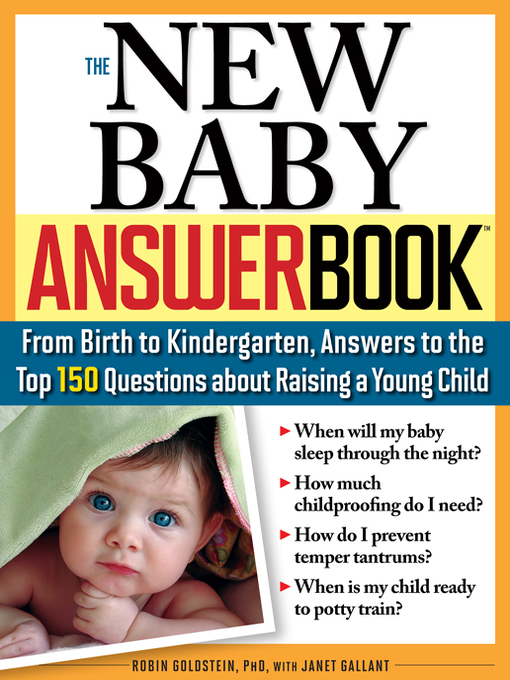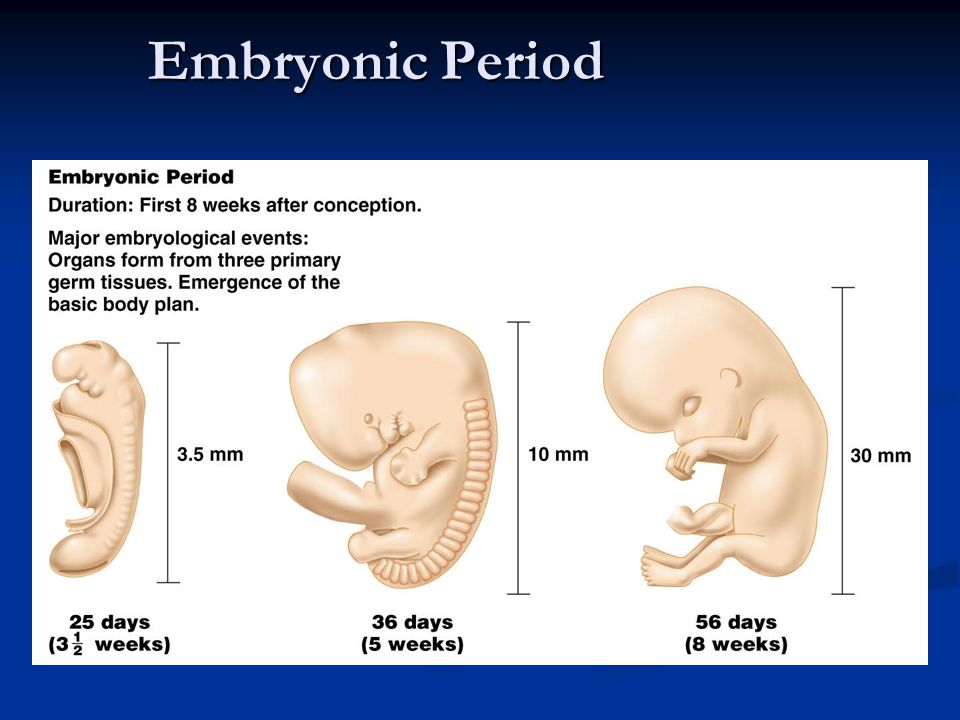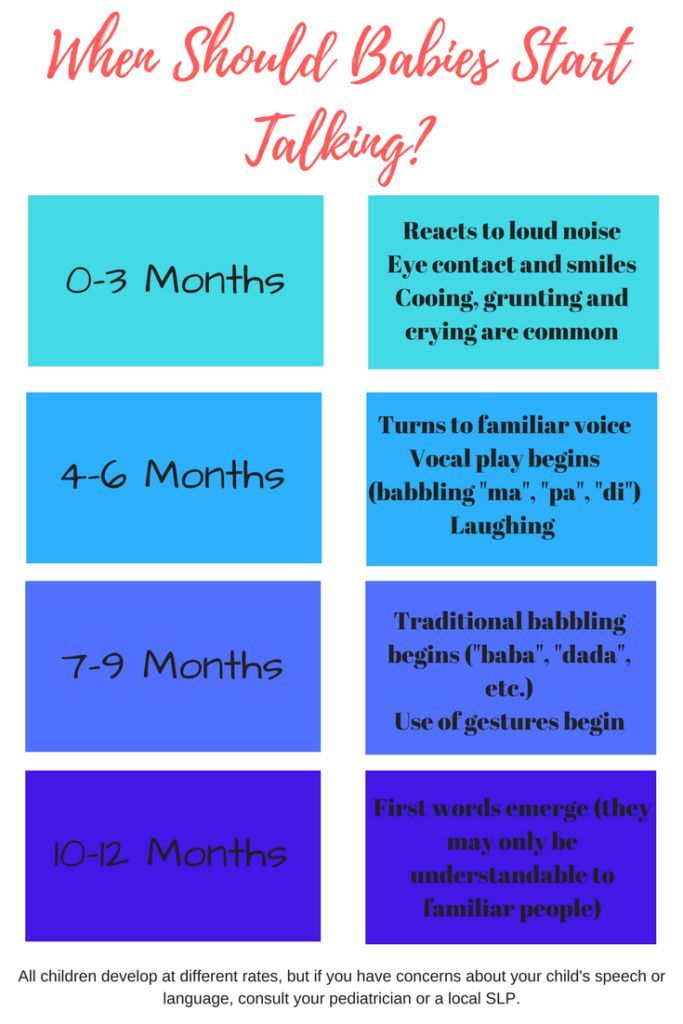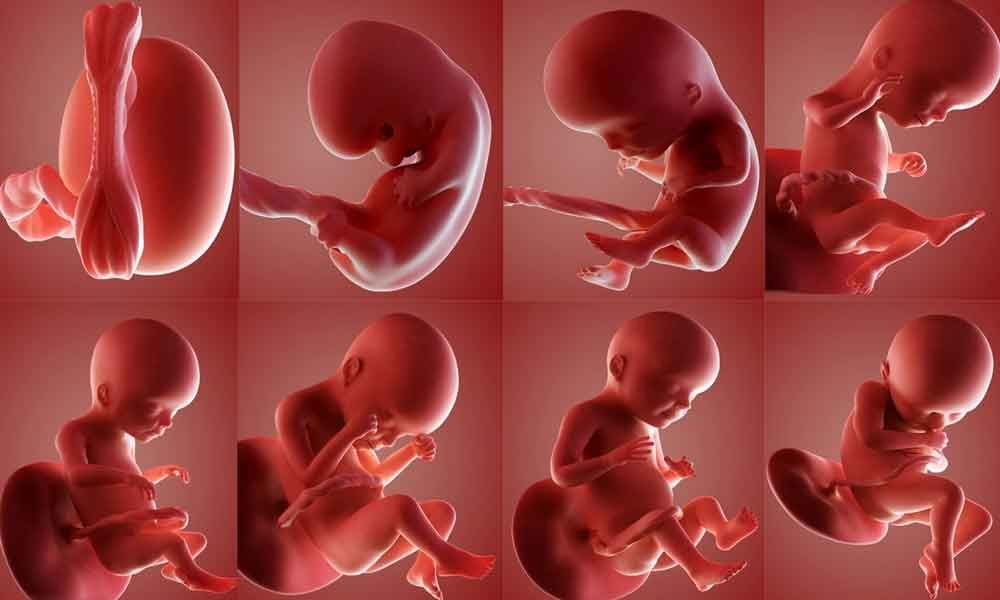When will baby come prediction
Labor Probability Calculator
About the Labor Probability Calculator
Will you go into labor today? Tomorrow? Next week? The labor predictor estimates the odds of spontaneous labor on a given day based on where you are relative to your due date using statistical modeling.
Important Tool Caveat
This tool predicts the odds of spontaneous labor without consideration of possible negative outcomes. It should not be used when making medical decisions.
About the Model
Prior research has shown that the distribution of spontaneous labor approximates a normal distribution with a standard deviation of 9 [1] or 13 days [2]. These studies provide the initial building blocks for our model, but fail to paint a complete picture. Neither distribution does a good job of estimating the number of preterm deliveries. The CDC has found that 9.6% of babies are born prematurely, before 37 weeks. The normal distribution based on [1] and [2], however, would predict less than 3% of babies are born prematurely (. 03% and 2.7% respectively). In fact, [1] specifically excluded preterm deliveries from their analysis which is why their model predicts so few preterm babies, which explains why it's model predicts so few of them.
The normal distribution is favored in these types of applications for it's simplicity and tendency to fit the data. In this case, however, the normal distribution is likely an over simplification. A key drawback is that the normal distribution is a symmetric distribution. That means two points equally far from the mean will have the same probability. A symmetric distribution that predicts 10% of babies will be born before 37 weeks will also predict 10% of babies will be born after 43 weeks. For all the births prior to 30 weeks, there would be a similar number of births after 50 weeks. Additionally, in a symmetric distribution the median (point which half of all pregnant individuals would have gone into labor), is equal to the mode (most common day to go into labor.) In prior studies, however, the mode date is typically after the median [2]. Although not scientific, conventional wisdom is that the most common day to go into labor is around 41 weeks.
Although not scientific, conventional wisdom is that the most common day to go into labor is around 41 weeks.
Taken together, these data points suggests that a skewed normal distribution might be more appropriate. The skewed normal distribution is a family of distributions that includes the normal distribution, however the skewed normal distribution need not be symmetric. Where the normal distribution is defined by two parameters (mean and standard deviation), the skewed normal distribution is defined by three (location, shape and scale). Using mean squared error we identified a skewed normal distribution that closely approximates the normal distribution identified with prior research (MSE of 0.002), accounted for 10% of spontaneous labors occurring prematurely, and predicted roughly half of all pregnant individuals would go into labor before their due date and half after.
- [1] H. Kieler; O. Axelsson; S. Nilsson; U. Waldenströ (1995). "The length of human pregnancy as calculated by ultrasonographic measurement of the fetal biparietal diameter".
 Ultrasound in Obstetrics & Gynecology. 6 (5): 353–357. doi:10.1046/j.1469-0705.1995.06050353.x
Ultrasound in Obstetrics & Gynecology. 6 (5): 353–357. doi:10.1046/j.1469-0705.1995.06050353.x - [2] Bergsjø P, Denman DW 3rd, Hoffman HJ, Meirik O. (1990). "Duration of human singleton pregnancy. A population-based study.". Acta Obstet Gynecol Scand: 197–207.
Differences between Datayze's model and those found on other websites
The key difference between our model and every other model out there (that we know of) is our model better incorporates the possibility of preterm spontaneous labor. Like [1], most online models predict the probability of spontaneous labor before 37 weeks is approximately zero. As you can see from the Full Chart we estimate the probability of spontaneous labor before 37 weeks as 9.6%, matching the number from the CDC. If you're past 37 weeks, this distinction will be less important. Before 37 weeks and our model will serve you much better.
Differences between Labor Probability Chart and the Labor Probability Calculator
You may notice the probabilities differ between the Labor Probability Chart and the Labor Probability Calculator. That is because the two apps are modeling two similar sounding, yet different events. This Labor Probability Chart shows the probability of spontaneous labor for a pregnant person without considering how far along she is in their pregnancy. The Labor Probability Calculator shows the probability of spontaneous based on how far along she is by renormalizing the distribution to include only the possible remaining days in a person's pregnancy. After all, for a person who hasn't gone into labor by today the probability of spontaneous labor starting yesterday is, by definition, 0%. Statistically speaking it's the difference between the probability of labor at 40 weeks 0 days in general, p_labor(40w0d), and the probability of labor at 40 weeks 0 days for a person who is already 39 weeks along, p_labor(40w0d|39WeeksAlong).
That is because the two apps are modeling two similar sounding, yet different events. This Labor Probability Chart shows the probability of spontaneous labor for a pregnant person without considering how far along she is in their pregnancy. The Labor Probability Calculator shows the probability of spontaneous based on how far along she is by renormalizing the distribution to include only the possible remaining days in a person's pregnancy. After all, for a person who hasn't gone into labor by today the probability of spontaneous labor starting yesterday is, by definition, 0%. Statistically speaking it's the difference between the probability of labor at 40 weeks 0 days in general, p_labor(40w0d), and the probability of labor at 40 weeks 0 days for a person who is already 39 weeks along, p_labor(40w0d|39WeeksAlong).
Take the Probabilities With You
Wondering what the probability is of going into labor before your due date, or before your induction date? Want to bookmark the Labor Probability Calculator with all it's data so you don't have to keep re-entering your date info it day after day? If you check the "Remember This" check box, a cookie will be created that stores your due date on your computer. Alternatively, you can save the parameterized URL by prepending the string ?duedate=MM/DD/YYYY to the end of the URL where MM/DD/YYYY corresponds to your due date. For example, the parameterized URL for the above input with a November 28th, 2022 due date would be:
Alternatively, you can save the parameterized URL by prepending the string ?duedate=MM/DD/YYYY to the end of the URL where MM/DD/YYYY corresponds to your due date. For example, the parameterized URL for the above input with a November 28th, 2022 due date would be:
https://datayze.com/labor-probability-calculator.php?duedate=11/28/2022
This website is intended for general information & entertainment purposes only. This website is not intended to be considered medical advice. I am happy to answer questions about the apps, and the mathematics behind them. I cannot answer medical questions.
Pregnant and thinking ahead? You might enjoy our other pregnancy apps, including a Week by Week Pregnancy Calendar. If it's really early in your pregnancy you may be interested in our Miscarriage Odds Reassurer, which is designed to help ease any miscarriage fears by emphasizing the odds of carrying to birth rather than the odds of miscarriage, or our Daily Miscarriage Probability Chart which shows how the probability changes over the course of the first twenty weeks.
Wanting to become pregnant? Our Time to Conception Estimator can estimate how long it may take.
Have baby names on the brain?
Try our Baby Name Apps, including Baby Name Uniqueness Analyzer or Baby Name Explorer. Still can't find a name you like? Try the Unique Baby Name Generator or the Name Blender which generates new names based on the latest trends.
Your Due Date is Wrong. The Imperfect Science of Due Date Prediction.
Both of my daughters arrived “late” according to the dates in my charts. Both girls seemed to mock the very concept of a “Due Date”. The little one, especially—she showed up a mere 30 minutes before my scheduled induction, 11 days after the day she was clinically expected to arrive.
I am not alone. The chance of delivering exactly on your magically assigned date is rare — only 5% of women will deliver on their Estimated Due Date.
So there’s a pretty good chance that your due date is wrong too.
But why are we so bad at accurately predicting due dates?
Assigning a due date takes several factors into account: last menstrual period as a proxy for the assumed day of ovulation, size of the baby at various stages (assessed via ultrasound).
A study compared these traditional methods in the cases of nearly 20,000 births. The researchers found that precise prediction is basically impossible. Regardless of which method they used to determine estimated Date of Birth, the actual Date of Birth showed considerable variation between babies (up to 2 weeks before, and 2 weeks after). Even with the earliest ultrasound, between 11–14 weeks when the fetus is lime-sized, the size of said lime appears to vary just enough to screw up any degree of predictability.
“Expectant mothers should be informed that there is only a 35% chance that they will actually go into labor during the week of their Estimated Date of Birth” – Khambalia, et al. 2001
Forget those fancy tools of due date prediction, a 2015 research study proved out what we’ve always known – babies don’t play by our rules.
In this study, researchers found that gestation lengths for normal pregnancies can vary up to 5 weeks. FIVE WEEKS! The researchers in this study knew exactly which day the little egg popped out of the ovary and started its journey to becoming a human. No guessing on last period or assuming ovulation date. This method is precision timing at its best.
FIVE WEEKS! The researchers in this study knew exactly which day the little egg popped out of the ovary and started its journey to becoming a human. No guessing on last period or assuming ovulation date. This method is precision timing at its best.
Gestation lengths for normal pregnancies can vary up to 5 weeks
Five weeks is obviously a huge window. This study suggests that human gestation may be a bit more complicated than previously expected. Even after the sperm race concludes and genetic material combines, the uterus-bound ball of cells does not follow a consistent trajectory. It can take the fast, direct route or the slow, scenic route before it nuzzles its way into the uterine lining and sets up shop. Even crazier, the environment that mom provides for the little ball of cells can also influence timing. All these little influences along the way then lead to a shifted developmental timeline that throws off our current methods of predicting due dates.
Essentially, each tiny human can be fast out of the gate or slow. Fast embryos are born sooner.
Fast embryos are born sooner.
“The trajectory for the timing of delivery may be set in early pregnancy” — Jukic, et al. 2013
Genetic factors for your
real Due DateComparisons of mom and dad’s birth record vs. their babies birth date also suggest that genetics play an important role in due date prediction. Simply put, faster-growing babies hit escape trigger earlier than slower growing babies.
But is the trigger baby size? or size of the remaining space in the uterus?
Seems like it’s the latter: babies squished into tight spaces may pull the trigger earlier! Short moms (>5’3”) deliver their babies almost five days earlier than their tall mom counterparts (>5’6”). But it’s not all genetic effects on baby size – tall or short dads had zero influence on when baby arrived. And babies of tall moms tend to come post due date, suggesting that the extra space may stall baby escape plans. Biologically speaking, uterine stretch may have something to do with when and how the body starts the labor process.
Essentially, each tiny human can be fast out of the gate or slow.
Fast embryos are born sooner.
Do Due Dates even matter?
We, as mothers and fathers, and anyone who has ever hounded a pregnant woman with the “when are you due?” question expect and crave predictability. We want a due “date”. But beyond satisfying the curious neighbor or aunt, there are serious implications for placing too much emphasis on a specific date.
If we don’t really know what the actual gestation length should be for each specific baby, how do we know who is early, who is late, and who is right on time?
Due dates serve an important clinical purpose—they provide information on when to intervene, speed things along, and get that baby out.
This may happen too early, before baby is ready. That is bad.
Or, it may happen too late. That is really bad.
One study found that baby girls have later estimated due dates than they probably should. As a result, girls have a higher risk of going post-term with serious consequences. Emphasizing the need to balance consequences of unnecessary early intervention with the possibility of intervening too late, the researchers on that study suggest a simple solution. They advise keeping a close eye on pregnancies with a wider window consideration of “post-date” and allow mom to have a strong voice in the decision about when to intervene.
Emphasizing the need to balance consequences of unnecessary early intervention with the possibility of intervening too late, the researchers on that study suggest a simple solution. They advise keeping a close eye on pregnancies with a wider window consideration of “post-date” and allow mom to have a strong voice in the decision about when to intervene.
They suggest putting all the cards on the table:
“Let women make an informed decision about which management they prefer… fully inform mothers about the uncertainties of pregnancy dating.” — Skalkido, et al. 2010
It doesn’t clear up the uncertainty but including women in the decision making process with full transparency about the BS of due date calculation, seems like a step in the right direction.
YOUR PREGNANCY SMARTS. Delivered.
Sign up for the Preg U Newsletter!
How to find out how many children will be by date of birth
|
Oksana TarasovaOksana Tarasova Journalist, copywriter Society116 546
Photo: Depositphotos / Wavebreakmedia
Numerologists talked about a way to find out how many children a couple will have by the dates of birth of the spouses. This does not require special knowledge and complex calculations. Those who are not yet in a relationship can use this method, but the results will not be entirely accurate - with the appearance of the second half, the result will change.
This does not require special knowledge and complex calculations. Those who are not yet in a relationship can use this method, but the results will not be entirely accurate - with the appearance of the second half, the result will change.
So, in order to predict your parental future, experts believe, it is enough to simply add up all the numbers from the dates of birth of both partners. For example, if it is 12/25/1988, then the scheme looks like this 2 + 5 + 1 + 2 + 1 + 9 + 8 + 8, for a total of 36. Then add 3 + 6 and get 9. The same with the date of the chosen one. For example, 12/12/1986 is 1+2+1+2+1+9+8+6, for a total of 30, that is, the number 3. 9+3 gives 12, 1+2 leads to 3. Next, we look for the value of our numbers below.
If you get one, this is a good sign for those who dream of a big family. Number 1 will allow a man and a woman to give birth to as many heirs as they want. The number 2 promises no more than two children, and 3 suggests some difficulties in this matter. A couple with a triplet may repeatedly delay the moment of conception due to health problems or financial difficulties.
A couple with a triplet may repeatedly delay the moment of conception due to health problems or financial difficulties.
The number 4 means that the spouses can become parents of a friendly quartet, and 5 guarantees more than one child, the appearance of twins is not excluded. 6 also implies having many children, but, most likely, the heirs will be from different marriages and with a big age difference, MK writes. If the sum is 7 - this is a maximum of one baby, often the seven corresponds to couples who do not want replenishment at all or are convinced childfree.
The number 8 may mean that children from previous marriages will be accepted into the family. Adoption is possible, but a common child is not excluded. And if it turned out 9, then we are talking about two heirs. It is extremely rare for “nines” to have many children. But no matter what the numbers say, in the desire to find parental happiness, it is important to be guided by the heart - yours and your loved one. Those who dream of a family will certainly have one!
Those who dream of a family will certainly have one!
Previously, 5-tv.ru told how to find out the age of the soul by date of birth.
Numerology Predictions A family Children
See also
-5° 779 mmHg Art.
86%
60.75
0.27 63.30
0.42
Water does not flow under a lying stone: Chinese advice of the day for Tuesday, November 29...
10:33
| Alexey KhitrovAlexey Khitrov Writer of the editors of the site of the Fifth channel Society30 879
Photo: Depositphotos / FamVeldman
Read us at: Zen News
Esotericist and numerologist Artem Donskov claims that the magic of numbers helps to establish harmony in the family and indicates the ideal time when a woman needs to give birth.
An expert explained how to calculate a suitable month for childbirth, based on the date of birth of the expectant mother. For example, a woman was born on February 23, 1984. We add the numbers in the date: 2+3+0+2+1+9+8+4=29. The resulting numbers are also added: first 2+9=11, then 1+1=2. The final number 2 is the number of the life path along which predictions are made, like the signs of the zodiac in horoscopes, says Donskov.
“I calculated the most favorable and harmonious months for the birth of children for each number. In addition, in the future, this will ensure harmony and mutual understanding in your relationship with the child, ” quotes the Wday.ru numerologist.
What are the best months to have a baby
Number 1 — August, September;
Number 2 - December;
Number 3 - February;
Number 4 - March;
Number 5 - May, November;
Number 6 - July;
Number 7 - June;
Number 8 - April;
Number 9 - January, October.












